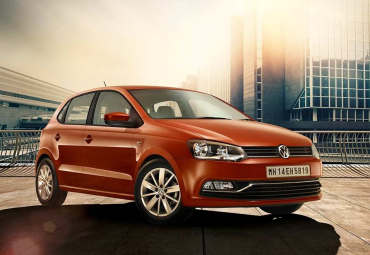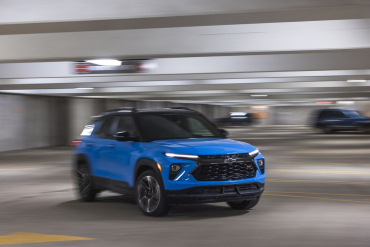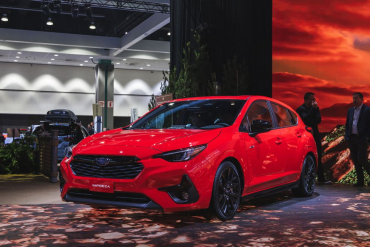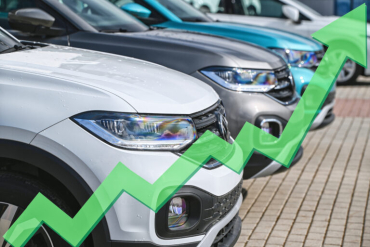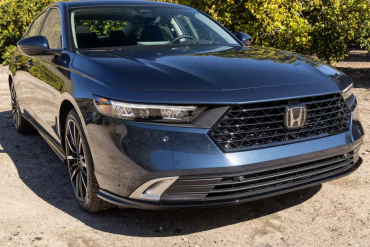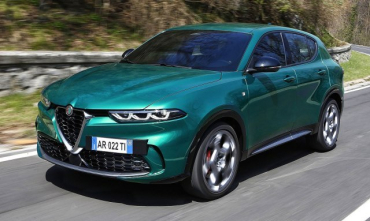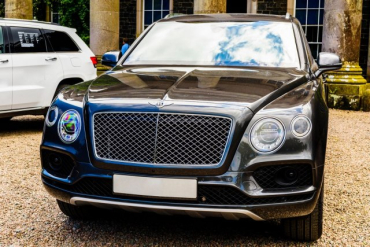
Worldcarblog.com
25 car models to avoid
As much as there has been a high degree of standardization in the automotive industry, there are still models that have "nothing wrong" for years, while others hang out with the masters every now and then.
We recommend for you
What Car? the publication helped us to see which 25 car models should be avoided, because they are already problematic within the first three years of ownership.
What Car? applied a proven formula in which over 14,000 car owners were surveyed regarding reliability over the past 12 months. A third of those surveyed confirmed that their pet "reported" at least one mistake.
To categorize defects and rank them in order of abundance, owners were asked to select an area within which the problem occurred. There were 14 such groups in total: battery, body, brakes, engine, electrical system (engine-related), exhaust system, exterior lights, fuel system, transmission/clutch, interior trim, electrical system (not related to engine), steering system , suspension and others.
Also, the editors created a questionnaire in which the owners reported how much time the car spent in the workshop to fix the problems and how much the repairs cost. That information was used to create a unique ranking system, which penalizes models that have had expensive and time-consuming repairs while rewarding those that have proven to be reliable.
The research covered 169 models from 33 different brands. Let's see who these "rascals" are:
25. Volkswagen Polo (2009-2017)
Result: 58.8%
Just over 20 percent of the owners of the previous generation Polo reported errors on their cars, and the most common was related to the electrical system (not related to the engine) - 15 percent, with even half of the problems related to the air conditioner. Other problems include the start-stop system, the rear camera and the screen of the infotainment system.
24. Mercedes-Benz GLA
Result 58.6%
GLA owners reported a fault with 42 percent of the cars. However, the majority (35 percent) were not so significant and did not prevent the car from being driven. All issues were resolved at no cost in less than a week.
23. Mazda3 (2009 - 2013)
Result: 58.4%
Overall, 28 percent of previous-generation Mazda3s had some kind of problem. Models powered by gasoline engines were more problematic than their diesel counterparts. The suspension, steering system and engine electrics were the areas where the problems were most serious in the petrol models. Not all cars were repaired under warranty, and more than half spent more than a day in the service station.
22. Volkswagen CC diesel (2012 – 2016)
Score: 58.0%
40 percent of CC owners reported some problem with their vehicles. Many of them were related to the electrical system, but not the one related to the engine. Some repairs were not covered under warranty, and some of the cars were out of service for more than a week.
21. Citroen C4 Picasso/Grand C4 Picasso
Result: 56.8%
Electrical problems have greatly affected the (dis)satisfaction of C4 Picasso and Grand C4 Picasso owners. Namely, 37 percent of the cars had certain problems. Of these, 22 percent were related to electricity unrelated to the engine, and the problem air conditioner stood out in that. A good proportion of the problems were suspension-related (15 per cent), with a smaller percentage of repairs costing more than £1,500.
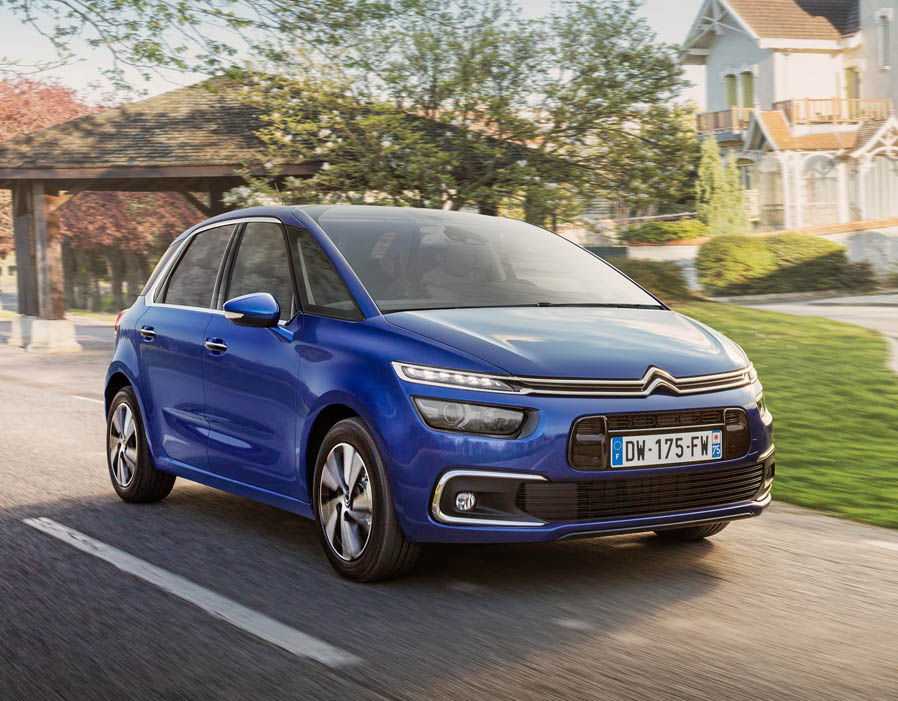
20. Seat Ateca
Result: 56.2%
Like previous models, the Ateca also suffers from electrical system problems unrelated to the engine. As many as 43 percent of owners reported problems, and 29 percent related to the specified area. The rear camera and automatic opening of the rear doors also caused headaches for owners. However, most of the cars were in roadworthy condition and almost all were repaired at no additional cost.
19. Range Rover diesel
Result: 55.8%
Although more durable than the smaller models in the luxury British brand's range, as many as a third of Range owners have reported some problem with their pet. The faults were mainly related to the electrics, but most of the problems were related to the bodywork and interior trim. Most of the vehicles were in drivable condition, and there were no additional costs for repairs.
18. Volvo V40
Score: 55.5%
Although the proverbially reliable brand, Volvo also found itself on the "rogue" list. Almost half of the V40 had some problem. Most often, they were related to the engine and exhaust system. Most of the repairs did not bring additional costs to the owners, while the stay in the service center was generally longer than one day.
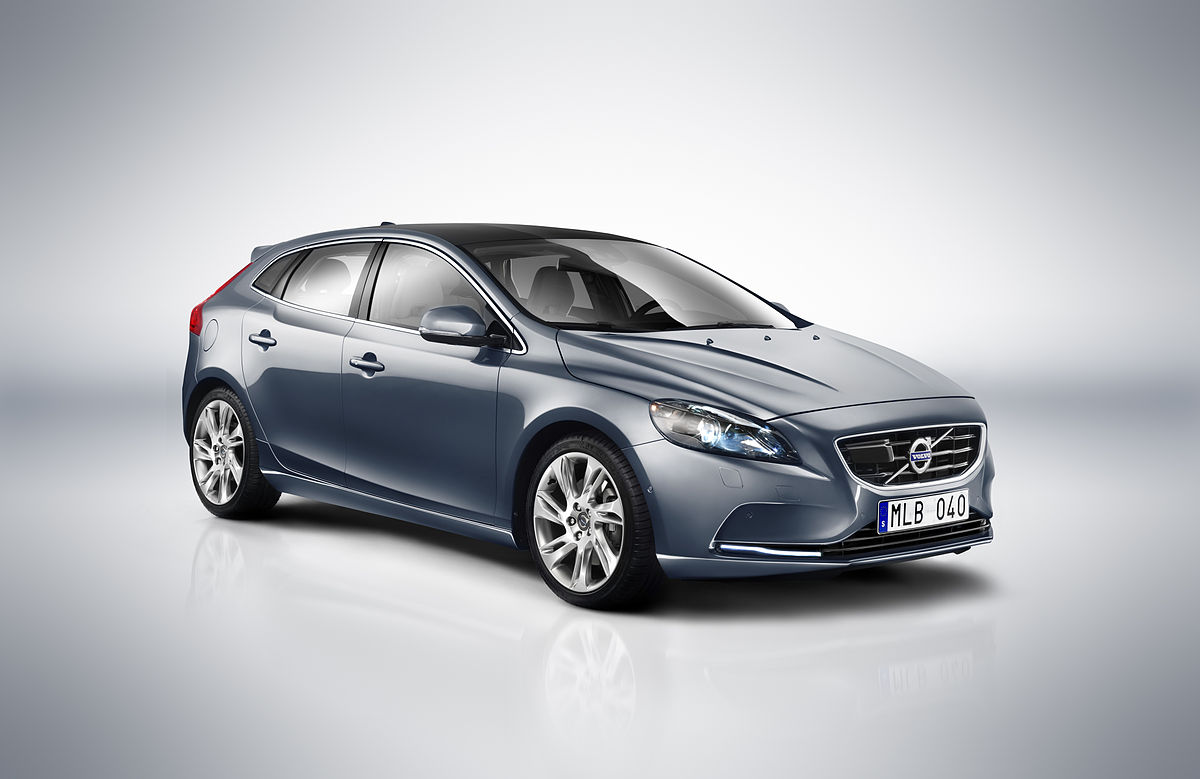
17. Nissan Juke petrol
Result: 55.2%
A third of the Jukes had some kind of problem, at least that's what the owners say. The faults were mainly in the engine and the electrics of the engine (15 percent of the problems were related to these areas). Most of the cars remained in drivable condition, and the vast majority were also repaired without hitting the owners' pockets.
16. Land Rover Discovery diesel (2004-2017)
Result: 54.2%
Although robust in appearance, the previous one
generation Discovery is anything but reliable. Half of the owners reported various problems, and like the Range Rover, the majority (22 percent) related to the bodywork. The electrics of the engine were problematic in 17 percent of the examples. Fortunately, most were drivable and repaired under warranty.
15. Mazda2
Result: 52.7%
Obviously, Mazdas and Nissans are not as reliable as other "Japanese". Although this Japanese brand often ranks well on the reliability charts, owners of the "two" reported a lot of problems related to the air conditioning, and more than 10 percent had problems with the fuel supply system.
14. Tesla Model S
Result: 52.4%
Here is another frequent "customer" on the lists of unreliable cars. Nearly 38 percent of Model S owners reported faults, which were mostly split equally between body quality, interior trim and electric motor. Owners have also reported brittle exterior door handles, as well as problems with headlights. Although all cars were repaired under warranty, some were being repaired for more than a week.
13. Range Rover Evoque
Score: 52.0%
Owners of this model concluded that 34 percent of Evoques have some problem. 8 percent refers to the electrical system unrelated to the engine, 7 percent to the transmission/clutch, and there were also problems with the quality of the body and interior trim. Most vehicles are repaired within the warranty period, at no additional cost to owners.
12. Nissan Note
Result: 48.6 percent
Almost 36 percent of the Note has some kind of error. The engine and electrical system of the engine are problematic on 10 percent of gasoline versions, and overall, almost 18 percent of all Note had problems with the electrical system, and more than 14 percent with the suspension.
11. Nissan Pulsar
Result: 48.3%
Are Nissan and Land Rover in a "dead race" when it comes to lack of quality? The Pulsar is affected by a high percentage of problems with the electrical system, and the Yogun air conditioner stands out the most. Most of the problematic examples spent more than a day in the workshop, but all repairs were carried out under warranty.
10. Mercedes-Benz B class
Result: 46.1%
Just over 35 percent of owners of this model reported errors. These include fairly serious areas such as the engine, engine electrical system and transmission/clutch. It is quite clear that this required a considerable amount of time spent in master workshops, which means that the repair took more than a week on average.
9. Mercedes-Benz E class
Result: 46.1%
The new E-Class doesn't cost a lot, so it's not a very pleasant feeling when the new "three-pointed star" doesn't show itself perfectly. The results are similar to the last generation, so it seems that they did not draw adequate conclusions in Stuttgart. In total, 24 percent of the cars were problematic. Interior trim, problems with the electrical system, both motor and general, were the most common causes of headaches. Although all examples were repaired under warranty, a certain percentage had to spend more than a week in the workshop.
8. Nissan Qashqai diesel
Result: 44.2%
Another Nissan... Almost half (49%) of Qashqai diesels suffer from some problem. The most frequently reported errors are related to the electrical system (24 percent), which includes navigation, infotainment system and air conditioning. An additional 19 percent of vehicles had problematic batteries. Most of the vehicles were drivable, and most were repaired at no additional cost to the owners.
7. Land Rover Discovery Sport diesel
Result: 43.8%
We just thought that Nissan would "dominate", but Land Rover "doesn't give in". More than 40 percent of Discovery Sports had reported faults, most of which related to the quality of the body and interior trim. Also, there were problems with electricity, both motorized and non-motorized. All vehicles were repaired at no cost to the owners, and most were out of service in less than a week.
6. Jeep Renegade
Result: 42.1%
Jeep is also another frequent "customer" on the lists of the most unreliable cars. The compact Renegade may look rugged, but the fact is that nearly 43 percent of the cars ended up with owner complaints, and those related to serious problems. The faults were mostly related to the engine, engine electrical system and brakes. Some of the cars spent more than a week being repaired.
5. Jaguar XE
Result: 36.7%
We kind of feel sorry for JLR. We have not seen this kind of "occupation" of the list of unreliable vehicles for a long time. Jaguar's full-size diesel engine is problematic in as many as 44 percent of cases. The problems are mostly related to the electrics, but as with the Land/Range Rover cousins, the problematic body was not bypassed either. Faults were also reported in the engine, fuel injection system, steering and suspension. However, what "pleases" is that all repairs were completed within a week.
4. Fiat 500X
Result: 32.3%
Given the "success" of the Renegade, it was expected that a "twin" model would appear on the list. Owners have reported more than a third of the problematic Fiat 500X. The problems are equally
divided into bodywork and electrics (both engine-related and general). Although all were repaired under warranty, most had to spend more than a day in the service station.
3. Nissan Qashqai gasoline
Result: 28.9%
We don't know if Nissan fans are "pulling their hair out", but this Japanese brand definitely has a quality problem. Gasoline Qashqai models have a fault in as many as 56 percent of cases. Accumulators, bodywork and electrics (motor and non-motor) are the main problem areas. However, not everything is so black, all were repaired at no additional cost to the owners, and most spent less than a week in the service.
2. Volvo XC90
Result: 22.6%
Do we hear that murmur in the audience? Shocking or not, the fact is that 53 percent of XC90 owners have reported various problems with their (expensive) pets. Many are related to the electrical system and software, and it is indicative that the repairs of these things were often not successfully carried out on the first visit to the service center. However, everything was done under warranty.
Range Rover Sport diesel
Score: 14.5%
JLR is definitely the "champion", and the "champion" model is the Range Rover Sport in the diesel version. As many as 60% of diesel Range Rover Sport had problems of some kind. They covered a wide range of areas, with the most serious faults being related to the gearbox, drivetrain, engine and suspension. Not all cars were repaired under warranty, and some took more than a week to be repaired.
Source: What Car?
Tested: 2024 Chevy Trailblazer Is Outshined by Its Smaller Sibling
A refresh can't save Chevrolet's subcompact SUV from being upstaged by the Trax, which is both more affordable and more appealing.
It's embarrassing to be upstaged by a little sibling. Just ask the Chevrolet Trailblazer, a subcompact SUV that's been around since 2021. The underachieving Trax sitting next to it in the showroom never really gave the Trailblazer cause for concern, until the redesigned 2024 Trax showed up with a whole new outlook on life. The new Trax promises more space, appealing style, and new features—all for significantly less money—and we just awarded it a 10Best Trucks and SUVs trophy. It is already encroaching on the Trailblazer's sales numbers, too, outselling it in the third quarter of 2023.
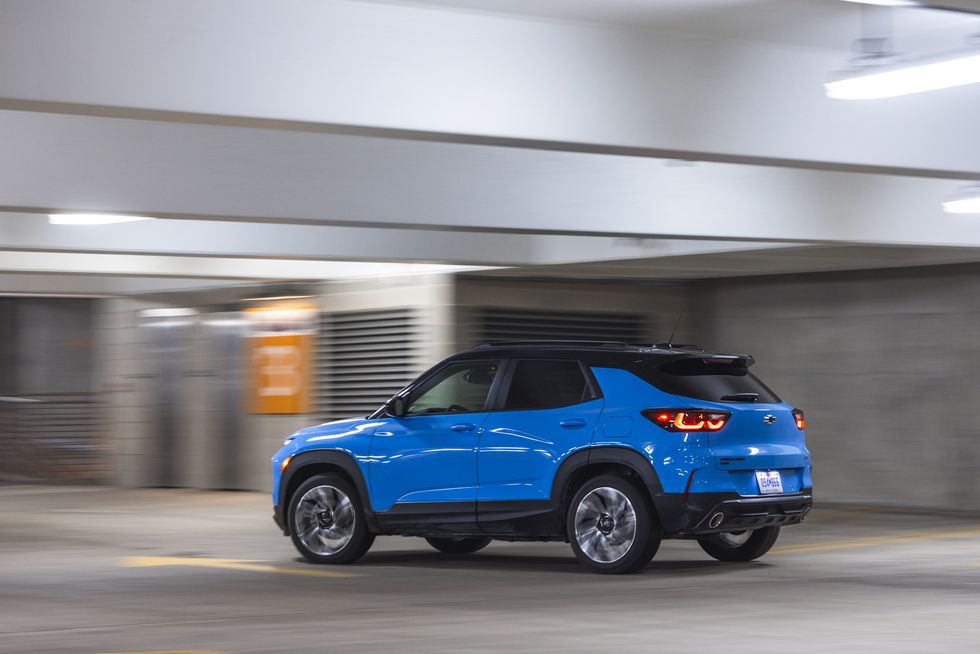
HIGHS: Cheeky looks, refined ride, strong brakes.
The Trailblazer is doing its best to stay relevant, and a refresh for the 2024 model year brings bigger screens inside, freshened looks, and new colors. But the Trailblazer is facing an uphill battle against its significantly cheaper stablemate—and against other vehicles in this competitive segment.
One might wonder why Chevrolet bothers to sell both the Trax and the Trailblazer. These two models are an example of a split that's evident within the subcompact-crossover segment. The Trax is meant to compete with the smaller, front-wheel-drive-only pseudo-hatchbacks that exist on the lower end of the price spectrum—think Kia Soul, Hyundai Venue, and Nissan Kicks—while the taller Trailblazer is meant to be a "real" SUV (in that it offers optional all-wheel drive, at least) that costs a bit more and has a more upright shape.
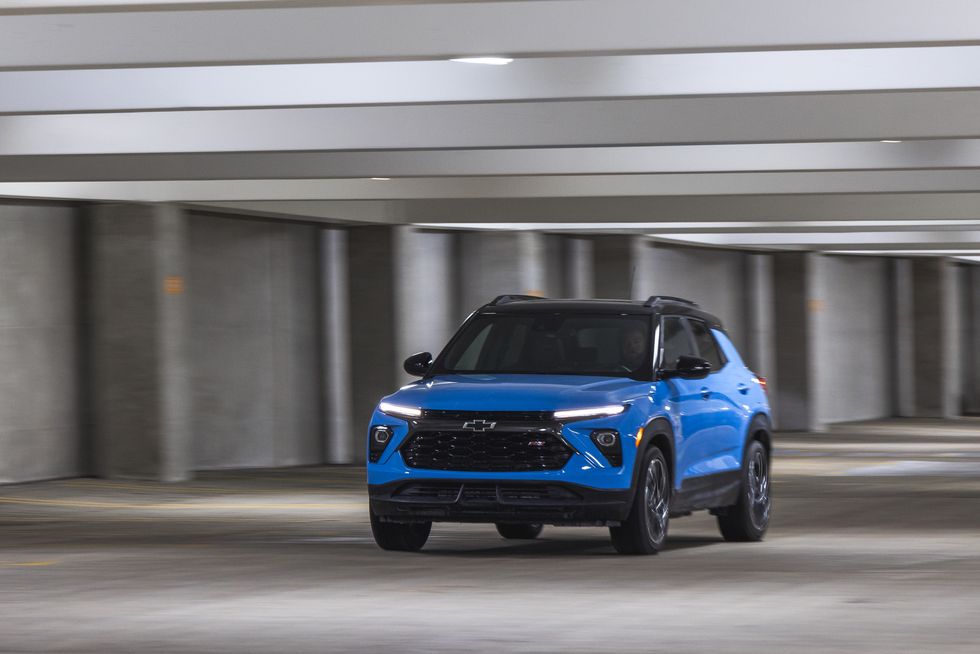
LOWS: Sluggish acceleration, cheap interior materials, questionable value.
It's not entirely an illusion, either, as the Trailblazer has a higher seating position than the Trax by more than two inches, according to our measurements. And, if you select all-wheel drive, the Trailblazer does offer a more compelling optional powertrain, a 155-hp 1.3-liter turbocharged three-cylinder with a nine-speed automatic transmission (as opposed to a CVT in other Trailblazers and a six-speed automatic in the Trax). There is a bit more refinement to be found in the Trailblazer, too, as its heavier curb weight creates more of a planted feeling on the road. We like the way the Trailblazer steers, and its brake pedal exhibits good feel, bringing the SUV to a rest from 70 mph in just 166 feet.
But when you look more closely at the numbers, paying more for the Trailblazer starts to make less and less sense. The Trax's longer wheelbase means it offers slightly more passenger room, and it even has a bit more cargo room with the seats folded, swallowing 21 carry-on suitcases in our testing compared with the Trailblazer's 19. Plus, the Trax's 1.2-liter engine is barely at a disadvantage next to the heavier Trailblazer's 1.3-liter. The Trax gets to 60 mph just 0.1 second slower and had a slightly better performance in our real-world 75-mph highway fuel-economy test (30 mpg, versus 29 mpg for the Trailblazer).
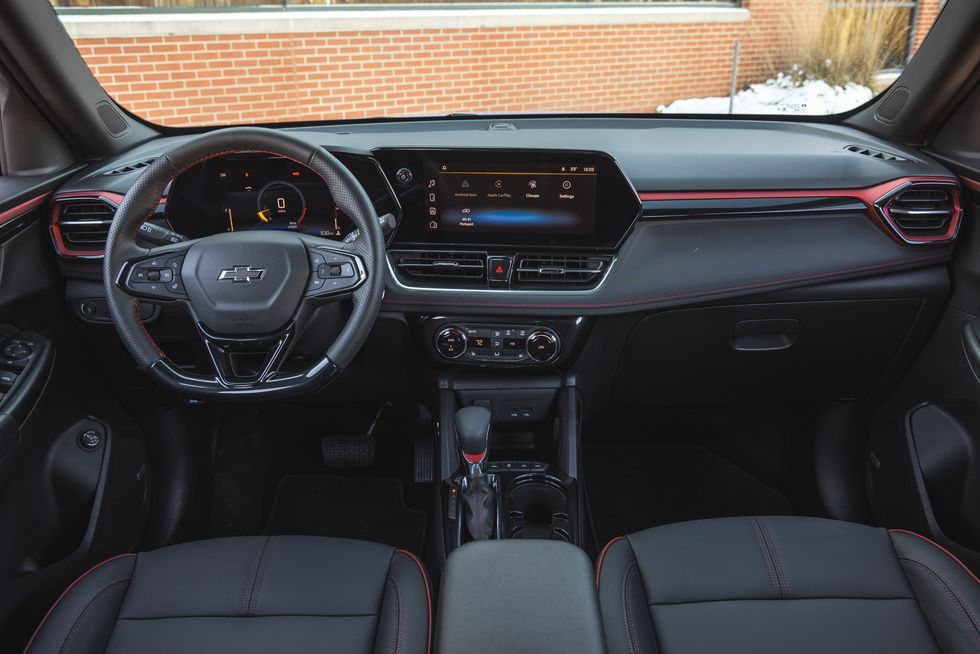
The price difference is what really makes the fight seem unfair. The Trax's base price sits at just $21,495, while a comparable Trailblazer is nearly $3000 dearer. The disparity grows when you start piling on options, as our loaded Trailblazer RS AWD—admittedly thick with desirable extras such as a panoramic sunroof and a power liftgate, neither of which the Trax offers—stickered for $34,470. A loaded Trax, on the other hand, barely crests $27,000.
VERDICT: The Trailblazer suffers from the existence of the more compelling Trax.
If you're merely looking to spend as little money as you can on a satisfying crossover-esque small car, the high-value Trax is a no-brainer. But if you're willing to shell out more for things like all-wheel drive and interior niceties, several more attractive options exist within the Trailblazer's price range, including the Mazda CX-30 and the Kia Seltos. That leaves the Trailblazer stuck in an awkward liminal space, with little to recommend it unless you manage to snag an attractive discount.
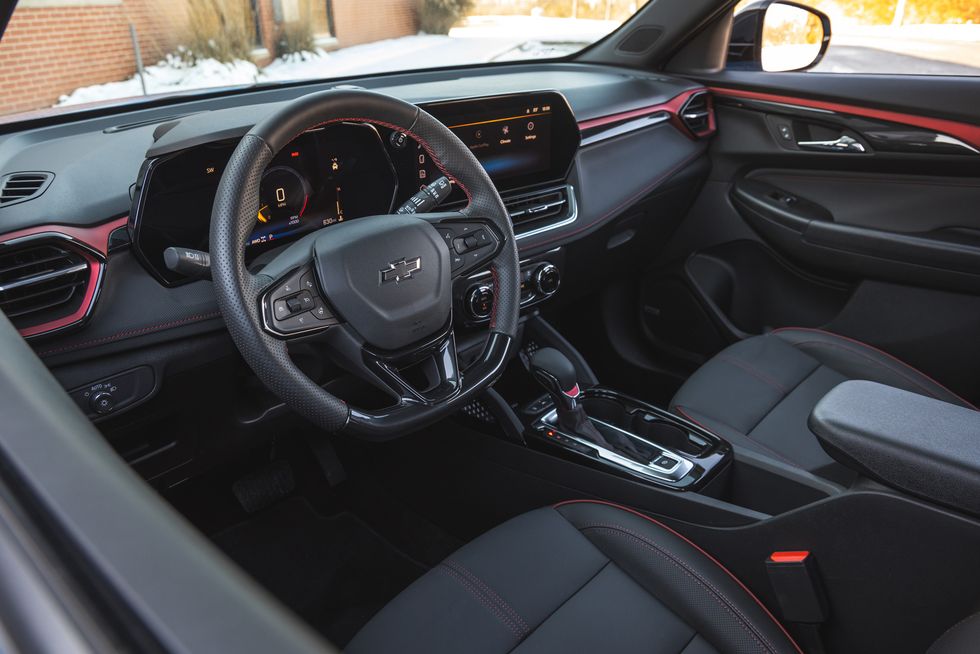
Specifications 2024 Chevrolet Trailblazer RS AWD
Vehicle Type: front-engine, all-wheel-drive, 5-passenger, 4-door wagon
PRICE
Base/As Tested: $29,995/$34,470
Options: power panoramic sunroof, $1495; Convenience package (automatic climate control, rear type-A and -C USB ports, wireless device charging, 120-volt outlet, auto-dimming interior mirror, driver and passenger illuminated vanity mirrors, power liftgate), $1195; Adaptive Cruise and Sound package (7-speaker Bose sound system, adaptive cruise control), $995; Fountain Blue paint, $395; Driver Confidence package (blind-spot monitoring, rear-cross-traffic alert, rear park assist), $395
ENGINE
turbocharged and intercooled DOHC 12-valve inline-3, aluminum block and head, direct fuel injection
Displacement: 82 in3, 1338 cm3
Power: 155 hp @ 5600 rpm
Torque: 174 lb-ft @ 1600 rpm
TRANSMISSION
9-speed automatic
CHASSIS
Suspension, F/R: struts/torsion beam
Brakes, F/R: 11.8-in vented disc/10.4-in disc
Tires: Continental ProContact TX
245/45R-19 98H M+S TPC Spec 3178
DIMENSIONS
Wheelbase: 103.9 in
Length: 173.5 in
Width: 71.2 in
Height: 65.7 in
Passenger Volume, F/R: 50/45 ft3
Cargo Volume, behind F/R: 54/25 ft3
Curb Weight: 3390 lb
C/D TEST RESULTS
60 mph: 8.7 sec
1/4-Mile: 16.7 sec @ 83 mph
100 mph: 28.0 sec
Results above omit 1-ft rollout of 0.3 sec.
Rolling Start, 5–60 mph: 9.5 sec
Top Gear, 30–50 mph: 4.5 sec
Top Gear, 50–70 mph: 6.5 sec
Top Speed (C/D est): 130 mph
Braking, 70–0 mph: 166 ft
C/D FUEL ECONOMY
Observed: 23 mpg
75-mph Highway Driving: 29 mpg
75-mph Highway Range: 380 mi
EPA FUEL ECONOMY
Combined/City/Highway: 27/26/29 mpg
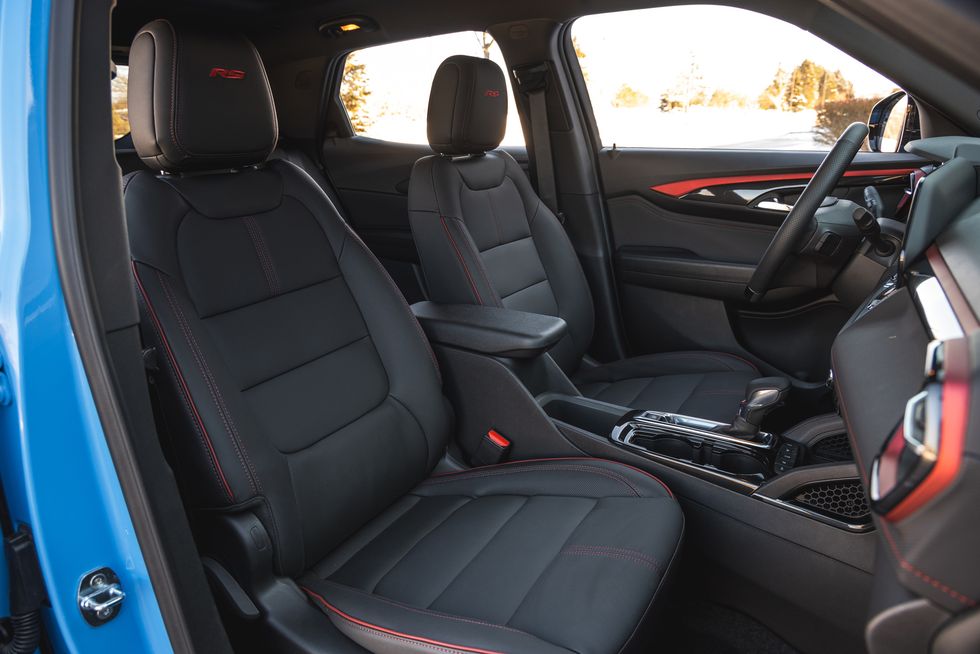
Source: caranddriver.com
2024 Subaru Impreza - First review
Subaru is rolling out the sixth-generation Impreza for the 2024 model year, and with it comes new looks, new technology, and a new powertrain option. The new Subie made its debut at the 2022 Los Angeles Auto Show just as it did when it showed face for the first time in 1992. Like the '90s original, the 2024 Impreza will be once again offered in sporty RS guise, powered by a 182-hp 2.5-liter four-cylinder borrowed from the Crosstrek SUV. Lower-priced and lower-powered base and Sport models get a 152-hp 2.0-liter instead. Subaru says the 2024 Impreza's chassis is stiffer than before and the compact hatchback's all-wheel-drive system now features active torque vectoring. We won't know if any of that adds more spark to the Impreza's personality until we get our hands on one, but for now, we'll say things look promising.
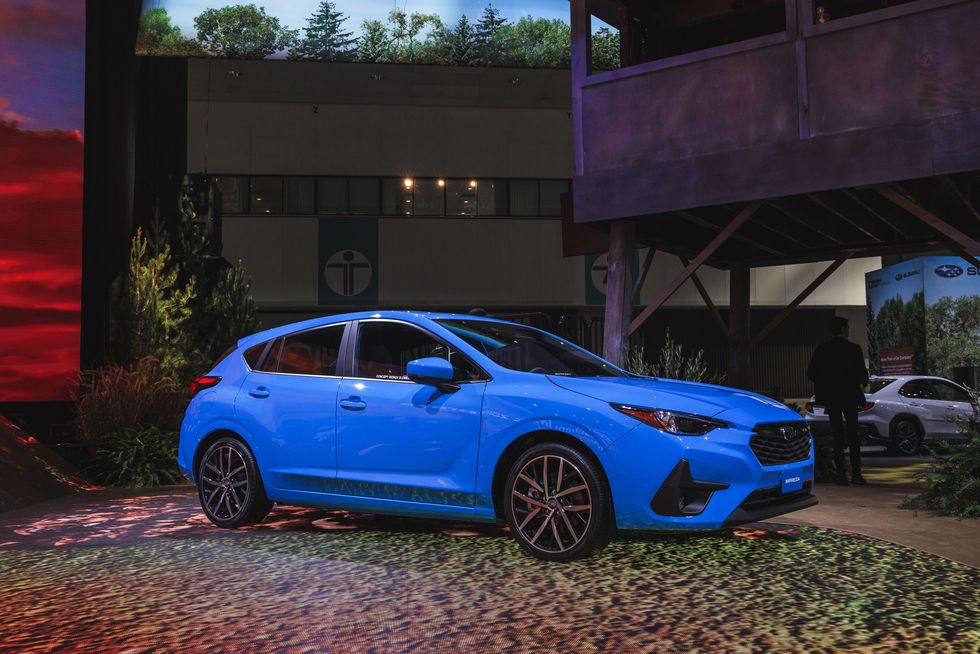
What's New for 2024?
So far, we know about several key changes to the Impreza model line. For starters, Subaru has made the continuously variable automatic (CVT) standard on all 2024 Imprezas. Unfortunately for three-pedal advocates, the automaker hasn't mentioned the availability of a manual transmission. Additionally, the Impreza is slated to be offered exclusively in a five-door hatchback body configuration–something WRX fanatics will surely envy, as they've been hoping for a WRX hatchback since it was discontinued after the 2014 model year. Speaking of the WRX, updates to the Impreza's exterior are similar to the design language seen on the latest generation of both the WRX and Crosstrek. Unlike those two models, though, the next-gen Impreza rolls without any plastic cladding clinging desperately to its body. Changes to the interior design make it almost identical to that of its newer stablemates, particularly the Crosstrek. The 11.6-inch Starlink touch display is available in the Impreza for the first time and is standard on Sport and RS trim levels.
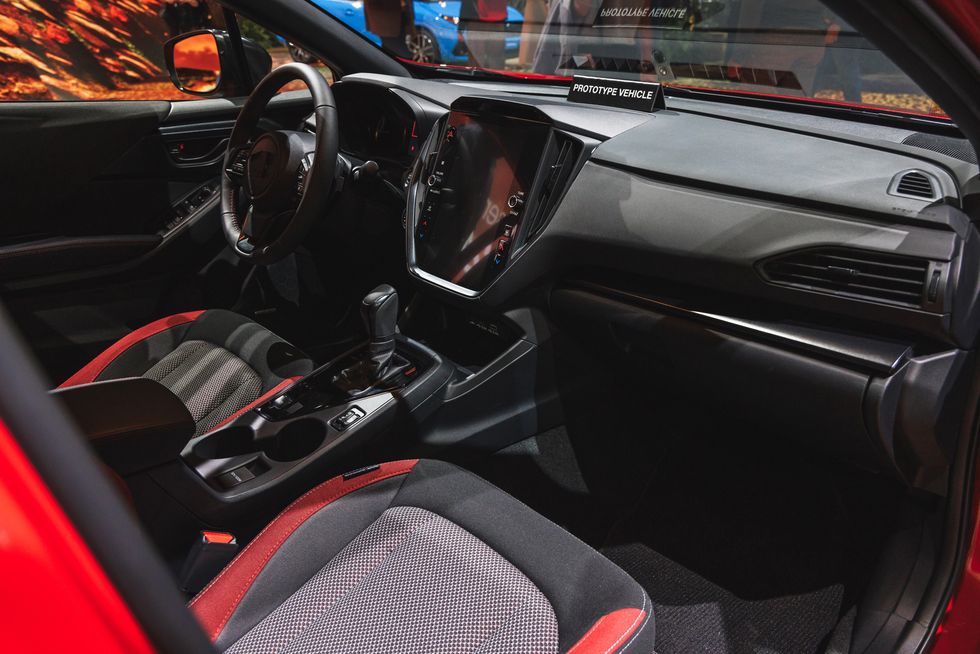
Given our natural disposition towards sports-oriented vehicles, plus the power of nostalgia, we're most interested in the reborn Impreza RS, which comes with a more powerful 2.5-liter four-cylinder engine, unique 18-inch wheels, artificial carbon fiber interior trim, a leather-wrapped steering wheel, aluminum-finished pedals, heated front seats, a 10-way power driver's seat with lumbar support, and USB charge ports for rear passengers.
Engine, Transmission, and Performance
The Impreza retains its meager naturally aspirated 2.0-liter flat-four engine, which musters the same 152 horsepower and 145 pound-feet of torque as before. A larger 2.5-liter four-cylinder boxer engine will be exclusively available for the new RS model, providing a power bump of 30 horsepower and 33 pound-feet of torque for a total output of 182 horses and 178 pound-feet. A CVT is standard on all 2024 Imprezas as is Active Torque Vectoring, which improves upon the capable Subaru Symmetrical All-Wheel Drive system. For an extra sprinkling of its rally racing sportiness, Subaru has equipped the new Impreza with a version of the dual-pinion electronic power steering rack found in the WRX. The automaker says that it has increased the chassis stiffness of the next-gen Impreza by 10 percent, too, which in theory should help both handling and ride. We'll update this section with performance figures once we've driven and tested the all-new Impreza.
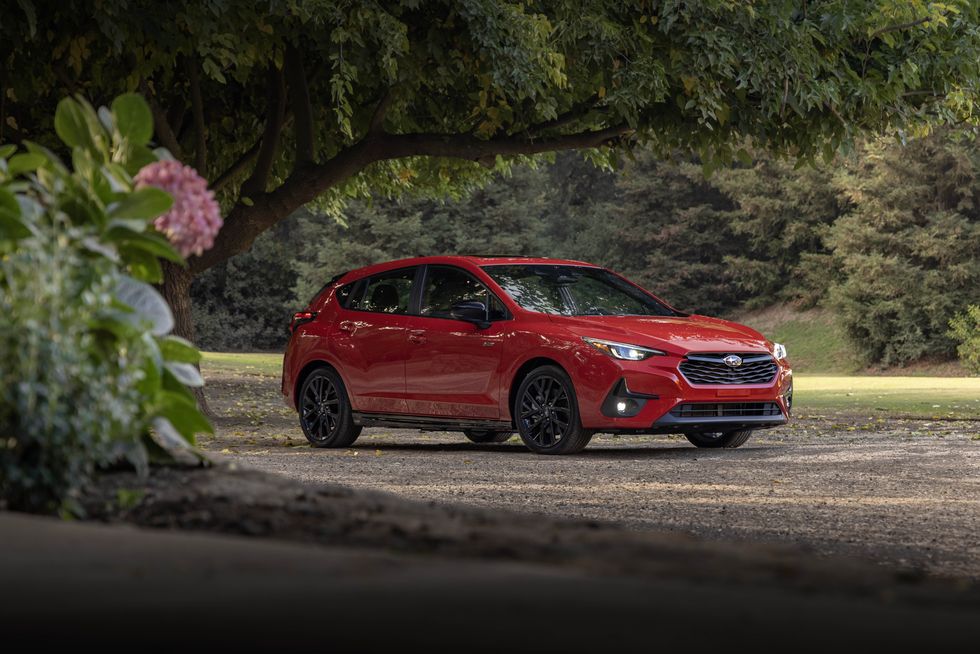
Fuel Economy and Real-World MPG
Since the base Impreza and Impreza Sport models will both make use of the same 2.0-liter engine in the outgoing model, we think it's safe to assume that EPA ratings will be similar to those of the current five-door hatchback equipped with the CVT: 28 miles per gallon in the city and 36 on the highway. We'll update this section once the EPA has published its ratings and after we've run the Impreza through our 75-mph highway fuel economy route which is part of our extensive testing regimen.
Interior, Comfort, and Cargo
Subaru interiors are known for being pragmatic rather than posh, and that trend continues with the 2024 Impreza. Dual-zone climate controls are standard for the entire model line as are 60/40 folding rear seats. The automaker says it focused its efforts on an ergonomic front seat design and also hushing the cabin–we'll verify whether it's more comfortable and quieter than the fifth-gen model once we've had the chance to get behind the wheel. From what we can tell so far, the updates appear to be similar to the changes found inside the 2022 WRX, including a larger center stack display. The revisions in the WRX sports sedan felt and looked like a natural progression from the interior design of the preceding generation, and we expect the same from the new hatchback since their interior designs are nearly identical.
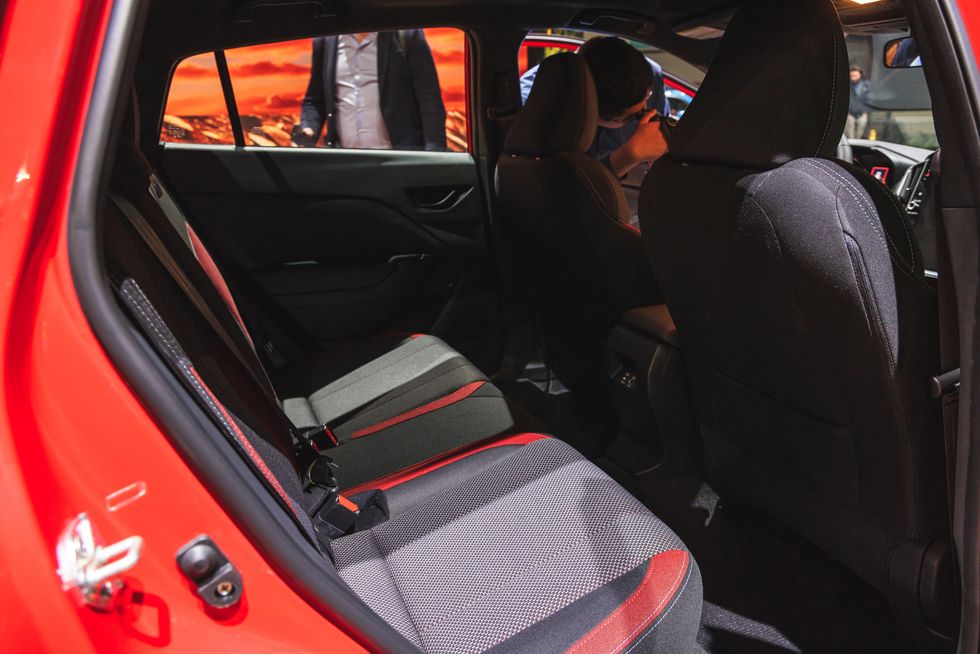
Infotainment and Connectivity
The 2024 Subaru Impreza offers the automaker's Starlink multimedia system standard on Sport and RS models. It is compatible with wireless Apple CarPlay and Android Auto and features an 11.6-inch touchscreen display with controls for the sound system, HVAC, and certain vehicle functions. For models equipped with Starlink, Subaru also offers its Safety and Security Connect Services, such as SOS Emergency Assistance and Stolen Vehicle Recovery Service, as well as conveniences like Remote Vehicle Locator. On top of that, the new Impreza provides its passengers with an auxiliary input jack, a USB-C port, and a USB-A port, so you're set regardless of which smartphone you happen to have. There's also an available Harmon Kardon 10-speaker sound system, though it's only offered on the range-topping RS model.
Safety and Driver-Assistance Features
In addition to the aforementioned Safety and Security Connected Services available for models equipped with Starlink, Subaru has made its EyeSight Driver Assist Technology standard for all three Impreza trim levels. Automatic emergency steering is included on models fitted with the optional blind-spot detection system, which is already packaged with lane-keep assist and rear cross-traffic alert—all of which are standard on the new RS model. Subaru is also introducing a few new services to the 2024 Impreza, including Valet Mode, Trip Log and Driving Journal, and Remote Vehicle Configuration. Neither the National Highway Traffic Safety Administration (NHTSA) nor the Insurance Institute for Highway Safety (IIHS) websites have crash-test results for the next-generation Impreza yet. Key safety features include:
Standard adaptive cruise control and lane-keep assist
Available blind-spot monitoring and rear cross-traffic alert
Available automatic emergency steering
Warranty and Maintenance Coverage
The Impreza's warranty is average for the class and not as generous as that of the Hyundai Elantra or the Kia Forte, both of which offer powertrain coverage for up to 10 years or 100,000 miles.
Limited warranty covers three years or 36,000 miles
Powertrain warranty covers five years or 60,000 miles
No complimentary scheduled maintenance
The most popular Volkswagen models have risen in price again
The German brand has informed dealers in Germany that conventionally powered cars will rise in price by 4.4 percent, citing inflation as the reason.
In a letter to dealers, Volkswagen announced that "significant price increases in the field of raw materials, energy sources and equipment" are actually the reason for this price increase. This price increase applies exclusively to models with an internal combustion engine, such as the Golf, Tiguan, Passat wagon, Polo and T-Roc.
All gasoline and diesel Volkswagens will have new prices from February 23. "Even Volkswagen cannot avoid high inflation." "While we are doing our best with long-term contracts, tactical investments and efficiency gains, the impact on price cannot be fully compensated," Volkswagen said in a letter.
Dealers, already worried about poor sales, criticized this decision by the Wolfsburg-based company. "I am shocked. Our sales are falling, and they are raising prices," said a Volkswagen salesperson who wished to remain anonymous.
Many dealers feel that prices should actually be lowered, due to the uncertainty of buyers in this economic environment. However, Volkswagen is not the only one raising prices, as the average price of a new car in Germany increased by as much as 5,000 euros last year.
2023 Honda Accord Review: Among the Best of What’s Left
The verdict: The redesigned 2023 Honda Accord is better than its predecessor, though not by leaps and bounds, and remains one of the best choices in the dwindling mid-size sedan class.
Versus the competition: As more and more mid-size sedans are discontinued, the Accord soldiers on and solidifies its position as one of the best in its class, though it cedes aggressiveness and performance to (of all things) the Toyota Camry.
As we stopped to shoot photos and video of the new Honda Accord, what appeared to be a vulture circled overhead — an encapsulation of the state of the mid-size sedan class that’s perhaps a bit too on the nose. Notable models like the Volkswagen Passat and Mazda6 are discontinued, and the status of others seems tenuous at best as shoppers continue to display their preference for SUVs. But Honda doesn’t think the sedan is dead quite yet, and the new 11th-generation Accord is evidence of that.
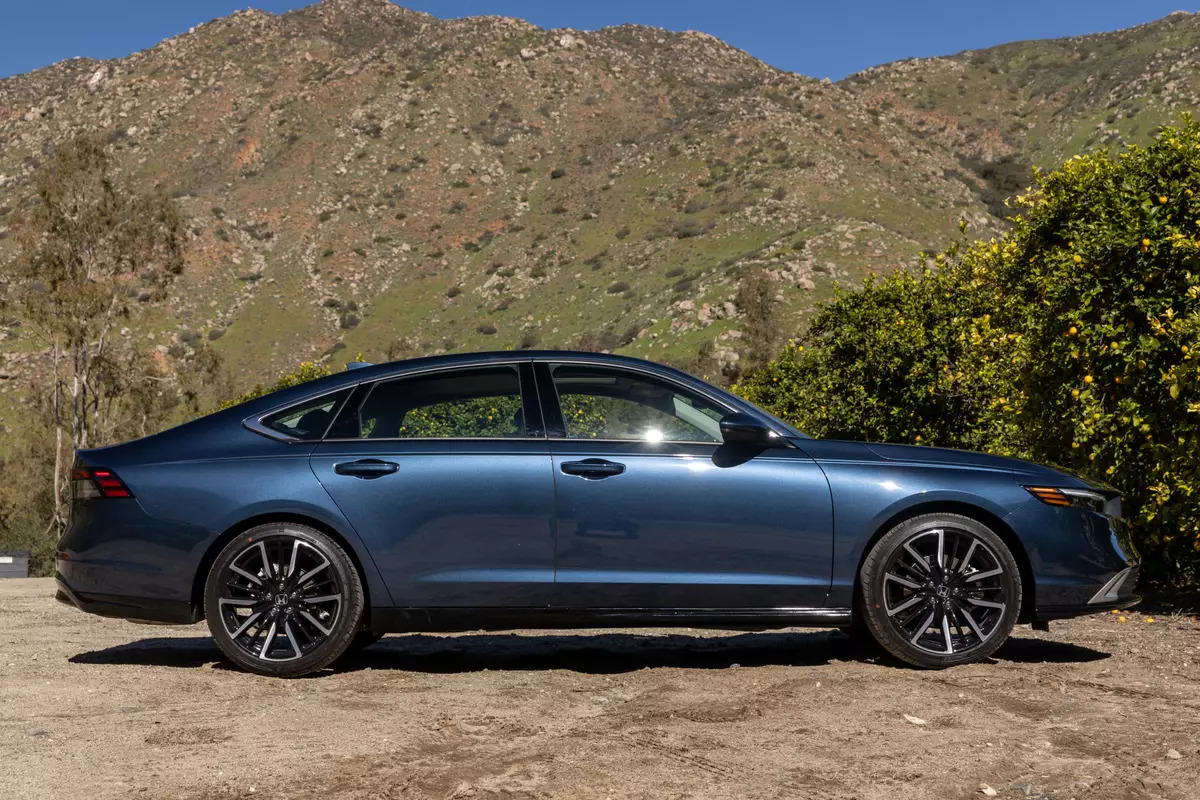
As part of its update, the Accord gets new styling that brings its looks in line with other Hondas. To my eyes, it looks like a big Civic, and I mean that as a compliment because I think the current Civic is one of the handsomest mainstream vehicles currently on sale. The automaker also eliminated the optional turbocharged 2.0-liter four-cylinder gas engine; buyers have a choice of a new hybrid powertrain using a 2.0-liter four-cylinder and two electric motors or an updated (but mostly carryover) turbo 1.5-liter four-cylinder engine and continuously variable automatic transmission. As with the redesigned 2023 CR-V compact SUV, however, the majority of 2023 Accords — and all Sport models — will come exclusively with the hybrid powertrain. All Accords also remain front-wheel drive even as all-wheel drive proliferates among competitors.
I traveled to Southern California for our first chance to drive the 2023 Accord and got to experience both the Sport and Touring hybrids as well as the gas-only EX (per Cars.com’s ethics policy, we pay for travel and lodging when attending such manufacturer-sponsored events). The good news for shoppers looking for a sedan is that the new Accord is better than its predecessor and one of the best choices in its class. The good news for buyers of the previous-gen Accord is that you shouldn’t feel buyer’s remorse — the improvements are mostly incremental.
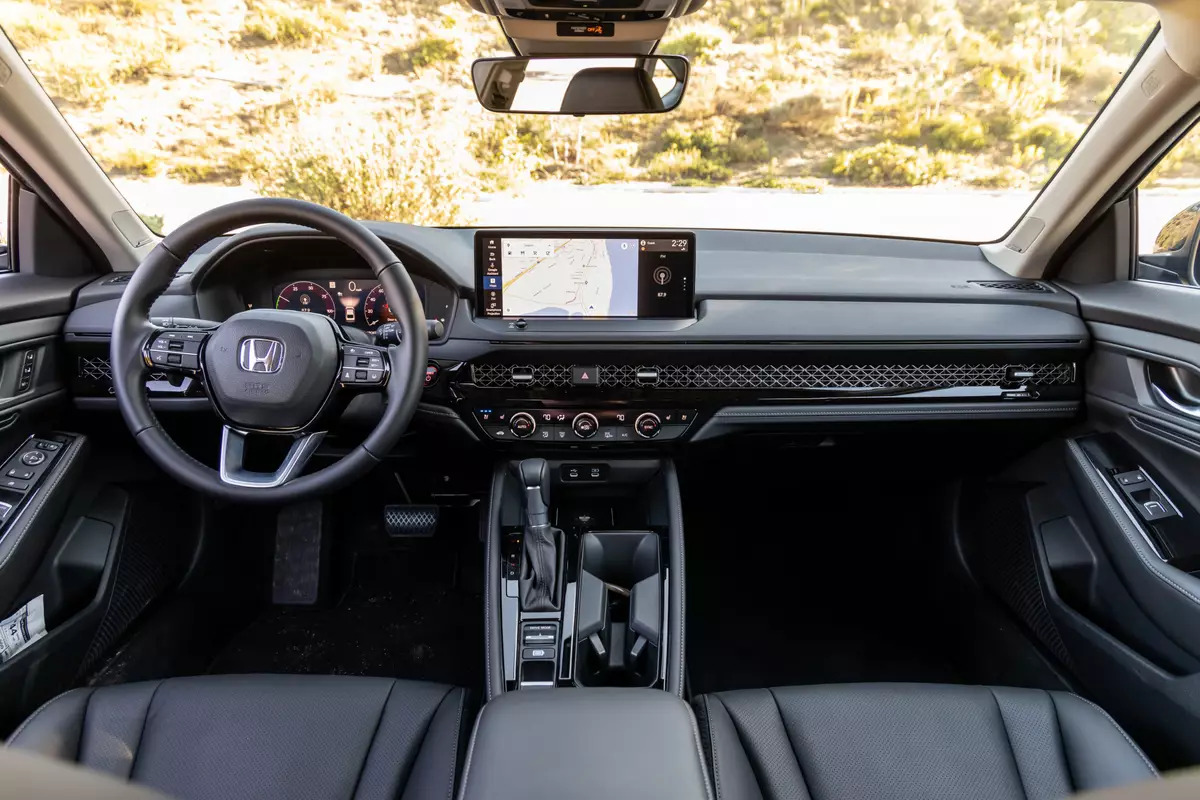
Easy and Mostly Pleasant to Drive
While “easy to drive” usually is faint praise — like a “very drinkable” beer — here it’s a compliment. Mid-size sedans should be comfortable, and the new Accord continues to excel in that regard. Hybrid versions have a system total of 204 horsepower and 247 pounds-feet of torque, and even though that includes models with the Sport designation, sportiness is not the Accord’s strong suit. The hybrid remains composed through corners with minimal but noticeable body roll, as well as little understeer despite its FWD configuration. According to Honda, the rear track is 0.4 inch wider, suspension tuning has been updated and the car is stiffer than the previous generation; none of that translates into significant handling improvements, but it is better. I do feel like some of my enjoyment of the Accord’s handling can be attributed to the simple fact that it’s a sedan in a market increasingly awash in SUVs; I love the feeling of sitting lower, and the car’s lower center of gravity compared with an SUV.
The Accord rides a bit firmly with the 19-inch wheels and low-profile tires that go on the Sport and Touring models I drove, but not so much that I found it truly objectionable. Steering, as in the previous generation, remains communicative and doesn’t feel overboosted; switching the drive mode into Sport adds extra artificial heft. Notably, the Sport and Touring trim levels had no noticeable difference in performance or dynamics. Accelerator pedal response is disappointing in hybrid mode, but power comes on more linearly when the powertrain is only using electric power. Like most hybrids, the gas engine is quick to join the party under brisk acceleration; I observed the best power delivery when cruising at highway speeds with the gas engine off before stepping on the accelerator to pass.
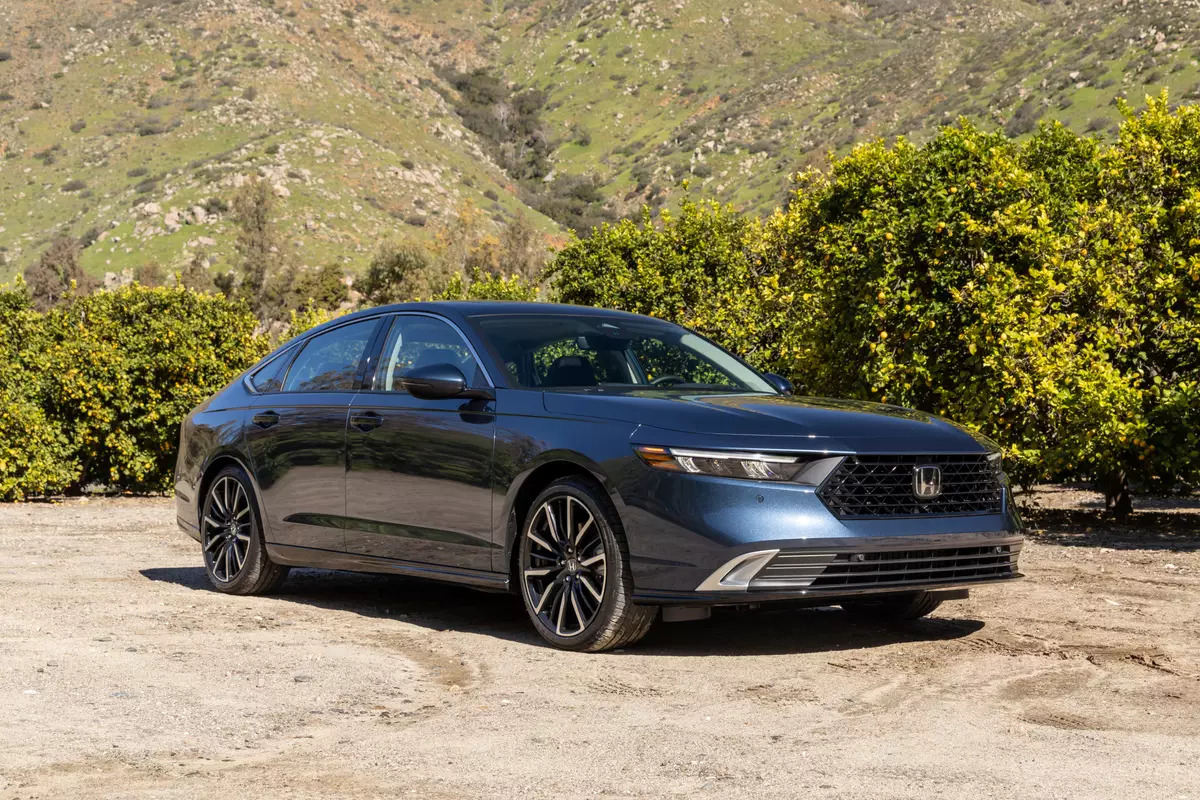
Instead of shifting, the paddles mounted on the steering wheel adjust the Accord Hybrid’s regenerative-braking strength. At their strongest level, the regen brakes allow for near-one-pedal driving. The brakes are a bit grabby initially, but they’re fairly easy to modulate otherwise. The regenerative brakes are also useful for controlling downhill speeds. At the lowest setting, which requires full use of the brake pedal, braking feel is linear and confident without any of the mushy or vague feel that often plagues hybrids.
The gas-only EX trim I drove had a better-cushioned ride — it gets 17-inch wheels and taller-sidewall tires — but it also felt less composed than either the Sport or Touring. Bumps and road imperfections that the Sport and Touring went over with just a firm impact upset the EX. Steering also felt vaguer, perhaps because of the different wheel-and-tire combination. Its 192-hp, turbocharged 1.5-liter four-cylinder engine is more refined, according to Honda, but any refinements compared to the previous generation flew under my radar. The powertrain is still noisy under hard acceleration and feels slower but more responsive than the hybrid.
Fuel economy becomes more important when a car commits to hybridization as much as the Accord does, and the good news is that new hybrid variants are more fuel-efficient than the old versions: Sport and Touring models are EPA-rated 44 mpg combined, up from the 10th gen’s 43 mpg; the Accord Hybrid is now rated as high as 48 mpg combined, also an increase of 1 mpg. The 2023 Toyota Camry Hybrid LE is rated far higher than the Accord Hybrid at 52 mpg combined, but other Camry Hybrids (rated at 46 mpg combined) sit in the middle of the Accord’s ratings. Gas-only Accords are rated 32 mpg combined, 1 mpg less than the last generation.
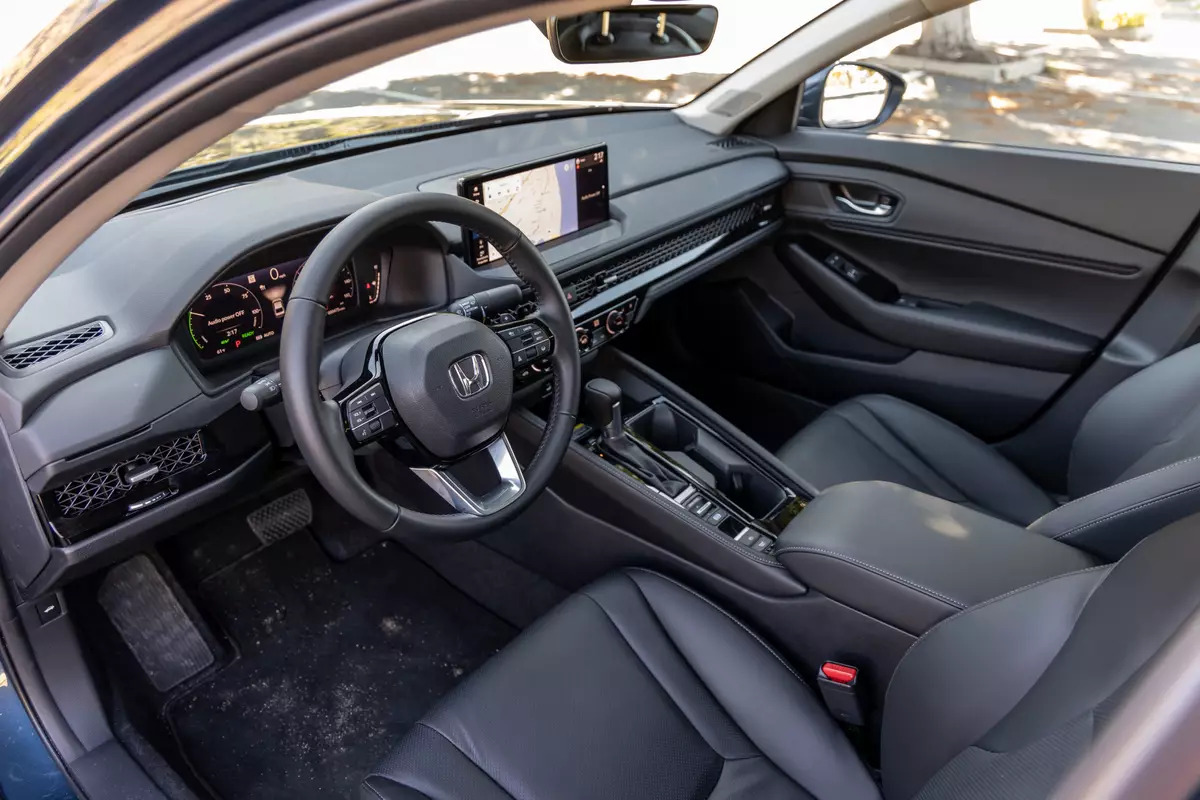
Better Interior, But Be Wary of Technology Creep
Grabbing headlines is the Accord’s newly available 12.3-inch touchscreen display and the inclusion of Google Built-In technology for the Touring. Excluding Google Built-In, the new system performs well with quick responses and crisp, clear graphics. Wireless Apple CarPlay and Android Auto are included with this display, and my use of wireless CarPlay worked flawlessly once connected. A bunch of automotive journalists using Bluetooth to connect to one of a line of cars can be a nightmare, it turns out, but connectivity worked fine apart from this rare scenario. Strangely, despite multiple trims having wireless Apple CarPlay and Android Auto, only the range-topping Touring comes with wireless device charging. It’s a confusing choice.
A more understandable decision — though also more frustrating — is the inclusion of Google Built-In for the Touring’s touchscreen. Many of the functions require a data connection to properly operate, meaning you may be out of luck if you’re somewhere without reliable cellular service. We’ve also had frequent issues getting the Google system to perform simple tasks, though I didn’t encounter them during this testing. Using voice commands for basic tasks like adjusting the in-car temperature worked fine, but in the time it took to say “Hey Google, change the temperature to 69 degrees,” have the command acknowledged and then executed, I could’ve easily done it myself; it feels like a solution for a problem that doesn’t really exist. With my phone connected to CarPlay, voice commands to place calls via Google Assistant were denied because of the CarPlay connection; I had the choice of disconnecting the phone from CarPlay or using Siri to place a call via voice command.
There’s a physical volume knob in front of the dashboard touchscreen, but unlike other, older Honda touchscreens, track and tuning adjustments are touchscreen-exclusive; older systems at least have buttons for those functions. Climate controls are, blessedly, physical buttons and knobs, and they feel high-quality to the touch. One more welcome physical control is the traditional gear selector lever instead of the push-button gear selector in prior models; the latter was fairly intuitive but also annoying, and it occupied roughly the same amount of space on the center console.
All 2023 Accords have a standard 10.2-inch digital instrument panel, which I’ve experienced and enjoyed in the 2023 Pilot SUV. My personal favorite feature is that the digital representation of the Accord in the center of the display shows when the taillights and turn signals are activated — helpful if you’re worried about the regenerative brakes illuminating the brakelights.
LX and EX trims get a 7-inch touchscreen along with volume and tuning knobs, but its small size relative to the larger screen left me a bit disappointed. Apple CarPlay and Android Auto are standard with this display, too, but require a wired connection. Those wired connections — at every trim level — are exclusively USB-C ports, with one for data connections and one for charging. (Higher trims add two more USB-C charging ports for rear passengers.) The Accord EX’s interior is also lacking in terms of materials quality when compared with higher trims, but it still felt well built.
As with other newer Hondas, the Accord’s forward visibility is improved because its front roof pillars have been moved rearward as part of its exterior update. Front-seat comfort is acceptable and improved, but I found my right knee bumping into the center console often, which wore on me during a day of driving. The taller dashboard, however, gave me more vertical knee room than the previous model.
Honda says the new Accord has gained less than a half inch of rear legroom. I’ve never found the backseat in previous Accords lacking in that respect, but more is welcome. My biggest issue is that the sloping roof of the fastback-adjacent styling cuts into rear headroom. I’m 6-foot-1, and while I can sit upright in the backseat, my head will touch the ceiling. Trunk space appears adequate, but there aren’t any useful tricks beyond the common 60/40-split, folding backseat; underfloor storage is taken up by tools and the tire repair kit.
Safety
The 2023 Accord comes standard with the Honda Sensing suite of active-safety features. As of this writing, the car had not yet been tested by either the Insurance Institute for Highway Safety or the National Highway Traffic Safety Administration. New for 2023 is Traffic Jam Assist, which can operate at speeds up to 45 mph and keep the Accord centered in its lane at a prescribed following distance from a preceding vehicle.
Should You Buy an Accord?
Selfishly, my answer is yes, if only to ensure that larger sedans remain on sale for years. Forgetting my nefarious goals, if you’re in the market for a mid-size sedan there are few better choices than the Accord. It’s very businesslike and no-nonsense in its approach, and hybrid versions are impressively efficient. For a more aggressive (and possibly more fun-to-drive) sedan in this class, you might want to consider a Toyota Camry instead. While the Accord isn’t necessarily the cheapest of the bunch, it’s very well rounded and felt worth its sticker price — whether it was the just-over-$30,000 EX, the almost-$34,000 Sport or the almost-$39,000 Touring. The sedan isn’t dead just yet, and the Accord is a solid choice in a dwindling field.
A year of upheaval for Alfa Romeo
The brand strongly supported last year's results of the Stellantis group, confirming a successful turnaround, with improved operating results as a highly profitable brand. Tonale achieved success with tight quality control, which has been significantly improved. The year was full of exciting challenges, but above all excellent commercial results, showing clear growth in Europe with registrations up 22%, which led to a significant increase in market share, in relation to and in contrast to the results of the region, where it was recorded down 11% compared to 2021. In terms of registrations, many markets recorded strong results compared to 2021: France +101%, Italy +22%, Germany +22%, Spain +28%, Netherlands + 84%, Austria +85%, Greece +163%, Portugal +174%.
Globally, the results describe a stable situation in terms of business results, similar to the consolidated results of 2021, and the significant results in Turkey stand out within the global results as the fastest growing market, with four times the volumes compared to 2021. In Asia, the Stelvio recorded the most significant increase of +25%.
The year 2022 was marked by the Tonale, the first electrified C-Class SUV, which marked the beginning of the brand's metamorphosis and is a milestone in the "zero to zero" process, which will enable the Alfa Romeo brand to become the fastest brand in the world to transition from zero electric vehicles (starting in 2022) to a completely zero-emissions range in 2027. Giulia and Stelvio, the main stars of the Alfa Romeo range and pillars of the brand's future production, have been renewed in terms of design and technology and are ready to position themselves as reference points in their segments, as which they have been since their premiere.
As repeatedly emphasized by brand representatives, Alfa Romeo brand strategies are driven by the slogan "quality without compromise". Indeed, the highest global goals have been achieved. One of them is the result published by the JD Power company in the USA, which is the Customer Satisfaction Index, in which Alfa Romeo ranks first in the world of cars.
2022 is a year to remember, and the pleasure and rewards don't end there. The result achieved by the Alfa Romeo team in the Formula 1 World Championship saw them jump to a high 6th place in the constructors' standings: the team's best result in a decade.
2022, which rewarded the efforts and dedication of a cohesive and determined brand, which aims to further progress in 2023. A year that promises to be full of challenges that Alfa Romeo will face with its usual bold attitude that the brand is known for, a symbol of noble Italian sporting spirit since 1910.
It's official: Bentley is discontinuing the W12
Bentley has announced that it will end production of its famous W12 engine next year, after producing the most powerful version ever for the ultra-limited edition Bentley Batur.
Production of the twin-turbo unit will stop in April 2024, as the British firm wants to speed up the step towards its Beyond100 strategy, according to which every Bentley model will be electrified by 2030, writes Autoblog.
Bentley will now focus efforts on its V8 and V6 hybrid lineup and will turn its W12 production line into an "extended area" for these powertrains.
When production ends next year, around 105,000 examples of the W12 engine will have been built since it was introduced in 2003.
The last 6.0 liter W12 will power 18 Batur Coupes, and with 739 hp it will be the most powerful SUS engine ever installed in a production Bentley.
Batur is already sold out, but Speed variants of the Continental GT Mulliner and Flying Spur Mulliner can still be ordered with the W12 engine.
Bentley expects orders for the W12 variants of the Continental and Flying Spur to close in December this year amid strong demand, but has not revealed how many units are left.

